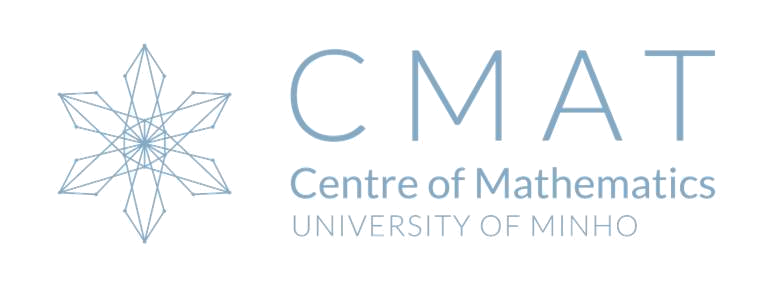Coffee Break
10:40 - 11:00 Daniel Tinoco (CMAT-SAPOR)
Visual Spatial Learning: Single-Field Spatial Interpolation Using Convolutional Neural Networks
Abstract: Predicting a complete spatially correlated field from sparse observations is a fundamental challenge in spatial statistics and environmental modeling.
Classical interpolation methods such as Kriging rely on Gaussian process assumptions and variography, which can limit their effectiveness in non-stationary settings and require substantial domain expertise.
In this work, we leverage an architecture based on convolutional neural networks (CNNs) for spatial interpolation that is trained and applied to a single partially observed field, without access to external data or
prior fields.
The model is supervised directly on the observed locations and learns to predict values at unobserved points on the user defined grid.
Unlike Kriging, our method does not require explicit covariance modeling or variogram estimation, and it can flexibly capture local spatial patterns in a data-driven manner.
We evaluated the approach on both synthetic and real-world spatial datasets, showing that it achieves competitive or improved performance relative to Kriging, particularly in cases with non-stationary or complex
spatial structures.
This work demonstrates the potential of CNNs for single instance spatial interpolation under sparse supervision, offering a practical alternative to classical geostatistical methods.
11:05 - 11:25 Moisés Rutkoski (CMAT-ANAP)
From classical to fractional models for a Euler-Bernoulli beam equation
Abstract: In this presentation, we analyse fractional models applied to the classical Euler-Bernoulli beam equation subject to point loading.
Our aim is to incorporate memory and non-locality effects through fractional calculus. We analyse formulations based on Caputo and Caputo-Fabrizio derivatives, for which we develop analytical solutions under a
fixed-supported beam boundary condition. Numerical simulations performed (using Maple software) demonstrate how fractional parameters influence the structure's dynamic behaviour, offering greater flexibility in
modelling with fewer material parameters. The results demonstrate the ability of fractional models to accurately represent complex phenomena in structural engineering.
11:30 - 12:00 Altino Santos (CMAT-GTA)
A tour through spherical f-tilings
Abstract: Folding tilings (f-tilings, for short) are intrinsically related to the theory of isometric foldings of Riemannian manifolds, introduced by S. A. Robertson
in 1977. As the set of singularities of a spherical isometric folding, a spherical f-tiling is an edge-to-edge decomposition of the sphere by geodesic polygons, such that all vertices are of even valency and the
sums of alternating angles around each vertex are \pi. Beyond this geometric connection, we will present an overview of the classification of (monohedral and dihedral) f-tilings of the sphere obtained over the past
two decades. Finally, we will highlight the recently obtained special families of dihedral f-tilings of the sphere induced by the Möbius triangle (2, 3, 4).
Lunch
14:00 - 14:30 Lisa Santos (CMAT-ANAP)
A short trip through variational inequalities
Abstract: Variational inequalities model several physical and biological phenomena, the most well-known being the obstacle problem. In this talk, we will briefly discuss
variational inequalities with constraints on the function or its derivatives. We will explain how an approximation argument allows us to rewrite these problems using systems of equations that involve
characteristic functions and/or Lagrange multipliers.
(joint works with A. Azevedo, D. Azevedo, F. Miranda and J. F. Rodrigues)
14:35 - 15:05 Graça Soares (CMAT-ALC)
Algebraic curves associated with some structured matrices of small order
Abstract: The numerical range W(A) of a n-square matrix A is a convex set in the complex plane, containing the spectrum of A, characterized by the Elliptical Range
Theorem when n=2. In this talk, the numerical range and corresponding boundary generating curves of Kac-Sylvester matrices of order up to 9 are characterized. The boundary generating curves are either elliptical
or oval shaped, and a pair of horizontal flat portions occurs in the boundary for any even order. Based on computational experiments, we conjecture that the previous type of algebraic curves, namely ellipses
and ovals, will appear when considering Kac-Sylvester matrices of an arbitrary order.
These results are further extended to some centrosymmetric matrices of orders up to 6. The classification of all the possible boundary generating curves for centrosymmetric matrices of higher dimensions remains
open.
Illustrative figures of the obtained results are presented.
This talk is based on a joint work with N. Bebiano e R. Lemos.
[1] N. Bebiano, R. Lemos and G. Soares, Algebraic curves associated with centrosymmetric matrices of orders up to 6. {\it Adv. Oper. Theory} {\bf 9} (2024), 56.
[2] N. Bebiano, R. Lemos and G. Soares, On the numerical range of Kac-Sylvester matrices, {\it Electron. J. Linear Algebra} {\bf 39} (2023), 241-259
15:10 - 15:40 Inês Sousa (CMAT-SAPOR)
Modelos Preditivos para Dados Longitudinais
Abstract: Modelos preditivos para dados longitudinais constituem uma ferramenta fundamental na análise estatística de processos biológicos e clínicos observados ao longo
do tempo. Estes modelos permitem explorar a dependência temporal entre medições repetidas no mesmo indivíduo, bem como quantificar a variabilidade intra e interindividual. Através de estruturas de correlação
adequadas e da inclusão de efeitos aleatórios, é possível capturar padrões dinâmicos e melhorar a inferência sobre trajetórias individuais e médias populacionais.
Neste seminário, serão discutidas abordagens preditivas baseadas em modelos lineares mistos e extensões não lineares, com ênfase na estimação por máxima verosimilhança e na avaliação da incerteza associada às
previsões. Serão ainda apresentados exemplos aplicados a dados biomédicos, ilustrando a utilidade dos modelos longitudinais na previsão da evolução de marcadores clínicos e no apoio à tomada de decisão em
contextos de saúde.
Coffee Break
16:10 - 16:30 Luiza Morin (CMAT-GTA)
Modeling Interactions: From Endemic Outbreaks to Neurodegenerative Processes
Abstract: From the spread of a virus during a pandemic to the silent battle between cells in the brain, the key lies in interactions. This presentation explores how
mathematical modeling of these interactions enables us not only to predict the dynamics of endemic outbreaks but also, in an innovative way, to understand the progression of diseases such as Alzheimer's.
Join us to discover how a single concept can unify the fight against both visible and invisible threats to human health.
16:35 - 16:55 Filipa Mendes (CMAT-ALC)
The logical essence of call-by-name CPS translations
Abstract: The Curry-Howard isomorphism is a connection between logic and computation. Among many manifestations, there is the link between double-negation (DN)
translations and continuation-passing style (CPS) translations. DN translations are interpretations of classical logic into intuitionistic logic. CPS is a compilation technique for high-level programming
languages. We show that the surprising link can be refined. The "logical essence" of the CPS translation is a conversion of the source program, from the natural deduction format to the sequent calculus format,
hence a change of deductive system without change of logic. The DN translation is an optional encoding of the sequent calculus. Composing the format conversion with the optional encoding gives back the CPS
translation. We will restrict to the case when the source program follows the "call-by-name" evaluation strategy.
17:00 - 17:40 Peter Gothen (FCUP, Universidade do Porto)
Geometry of surfaces and moduli spaces
Abstract: There are three complete plane geometries of constant curvature: spherical, Euclidean and hyperbolic geometry. We explain how a closed oriented surfaces can
carry a geometry which locally looks like one of these. Focussing on the hyperbolic case we describe how to obtain all hyperbolic structures on a given topological surface, and how to parametrise them. Finally
we introduce Higgs bundles and explain how they relate to hyperbolic surfaces. Time permitting I will explain some recent generalisations of aspects of this classical story.
17:45 Closing
Posters
Mouse over the titles shows poster
abstracts.
-
Filipe Costa (CMAT), José Natário (CAMGSD, UL)
Can Relativistic Effects explain Galactic Dynamics without Dark Matter?
Abstract:
-
Faustino A. Maciala (CMAT), Cláudia Mendes Araújo (CMAT), Pedro Patrício (CMAT)
A Complete Characterization of the Drazin Index in Double Star Digraphs
Abstract:
This event is supported by Portuguese funds through the CMAT - Research Centre of Mathematics of the University of Minho within the project UID/00013.



